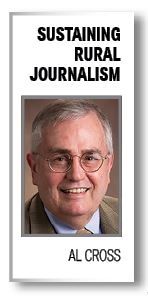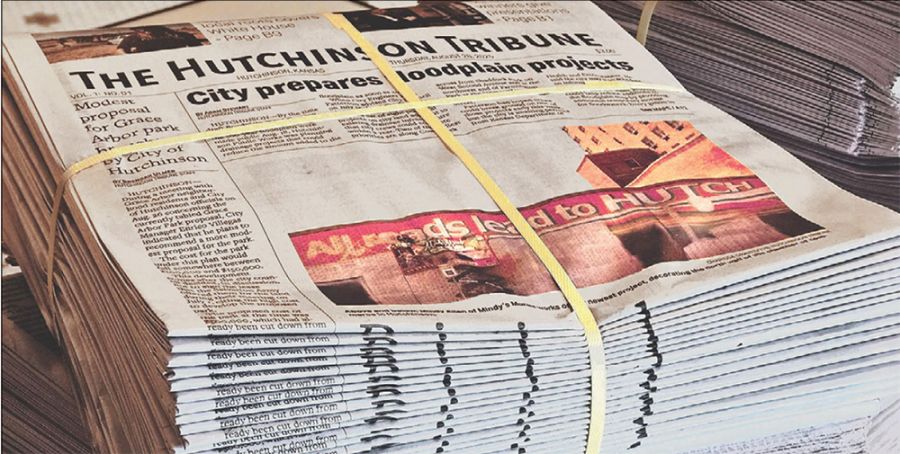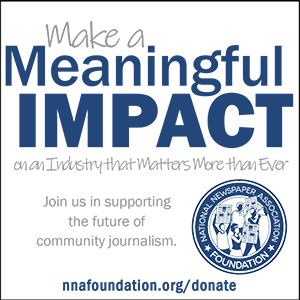Weekly editors, publishers feel a need to look after their and counterparts' mental health in the isolation that defines 'rural'
Jul 17, 2023



Has there been a more stressful time for community journalists, especially those in rural areas, where the isolation that defines rurality limits access to mental-health care and gives them few trusted peers to rely on for help and support? Rural editors, publishers and reporters have suffered the double whammy of the pandemic amid the impact of the great digital shift, which has robbed them of audience, revenue and colleagues.
Several editors and publishers talked about these existential issues with rural-journalism researchers June 21 at the International Society of Weekly Newspaper Editors' annual conference in Reno. After Christina Smith of Georgia College and State University and Kyle Miller of the University of South Dakota presented their research on rural journalists' mental health, Smith asked them if they have "confidants" with whom they can discuss the stresses of the job and the problems those stresses can cause. That sparked an interesting conversation.
ISWNE President Gordon Cameron of Hamilton, Ontario, said that after every annual conference, "We leave energized and that’s because, the people in this room, you all get it," through common experiences, some of which can be stressful. He said that has helped him get through "difficult times." Ken Garner of the Maryville Forum in Missouri said “I’ve found my tribe” in ISWNE. He said retired publishers Gary and Helen Sosniecki, longtime ISWNE stalwarts, had helped him, and he would have “no issue” calling anyone in the room at the University of Nevada-Reno for help. He said that is a key to his mental health.
Reed Anfinson, publisher of the Swift County Monitor-News and two other weeklies in rural Minnesota, said he agreed with all that, but “I also feel like we’re glossing over the real impact that a lot of isolated newspaper publishers face in America. We sit there in our offices, for many, many weeks, without hardly interacting with other publishers, and there's too many publishers that don't belong to organizations. So there is a real problem out there with isolation.”
Especially when the concerns are existential. Anfinson said community publishers ask themselves, “Can I sell my newspapers? Will somebody want them? . . . Those things all eat at us, all the time.” He said ISWNE members can talk about it in "a therapy session" but “There are a lot of problems out there in our industry that have to be addressed and we have to get more of our publishers involved.”
Tim Waltner, retired publisher of the Freeman Courier in South Dakota, noted that state and provincial press associations have legal hotlines, and suggested they should have mental-health hotlines, too. Anfinson called that "a great idea," noting that both major farm groups in Minnesota have mental-health hotlines for their members.
Smith said the research paper she and Miller are publishing soon in Newspaper Research Journal calls on press associations and other organizations "to step up" and offer mental-health help, and encourages publishers to raise the issue with their readers “and say, this job is hard, but we love every minute of it because it’s our calling.”
Smith and Miller surveyed 31 Georgia and South Dakota publishers with weeklies of less than 3,000 circulation as part of a broader study about newspapers and the pandemic. Some said it affected their mental health, mainly due to financial concerns that were not entirely related to the pandemic. She said the title of their paper, based on a quote from one interviewee, is “The end of the golden era of weekly newspapering.”
Perhaps, but that's painting with a broad brush. The U.S. still has about 6,000 weekly newspapers in almost 3,000 counties, most of them rural, but with differing levels of rurality and prosperity, and many different challenges. Their success in meeting those challenges could depend partly on how much they could help each other, from one-on-one relationships to international organizations like ISWNE.
The isolation that defines rurality means that while there are thousands of good rural journalists, all too often they are the only person in their newsroom who fits that description. They need friends, allies and advisers, both inside and outside the industry. Let's all try to help each other.
UPDATE: Most local journalists "are burned out," Elizabeth Djinis writes for Poynter, citing a survey by the journalism school at the University of North Carolina. It's become "an institutional issue," says Scott Reinardy of the University of Kansas’s j-school.
Al Cross edited and managed rural newspapers before covering politics for the Louisville Courier Journal and serving as president of the Society of Professional Journalists. He is a journalism professor at the University of Kentucky and director of its Institute for Rural Journalism and Community Issues, which publishes The Rural Blog at http://irjci.blogspot.com.









